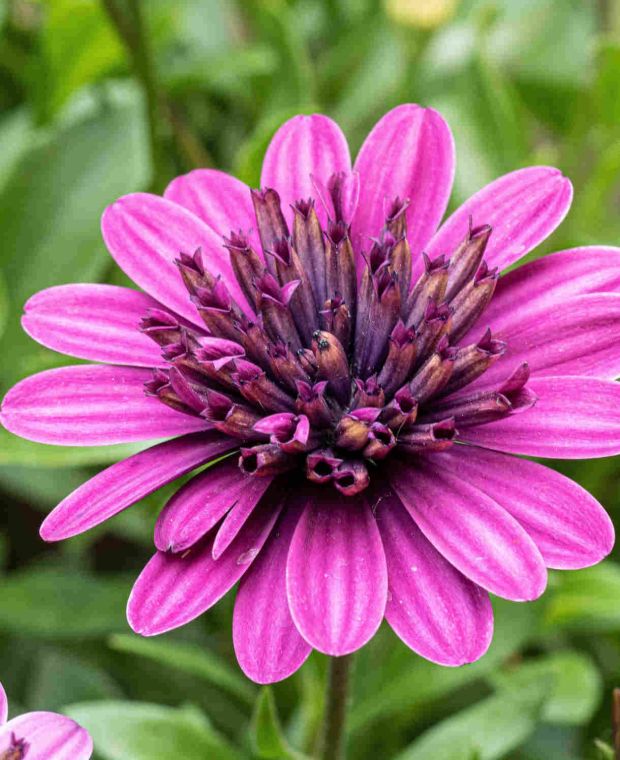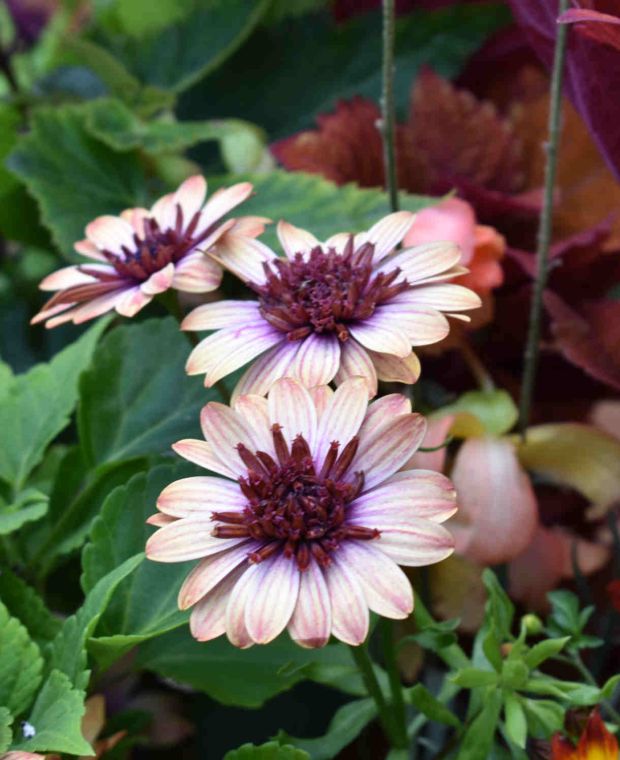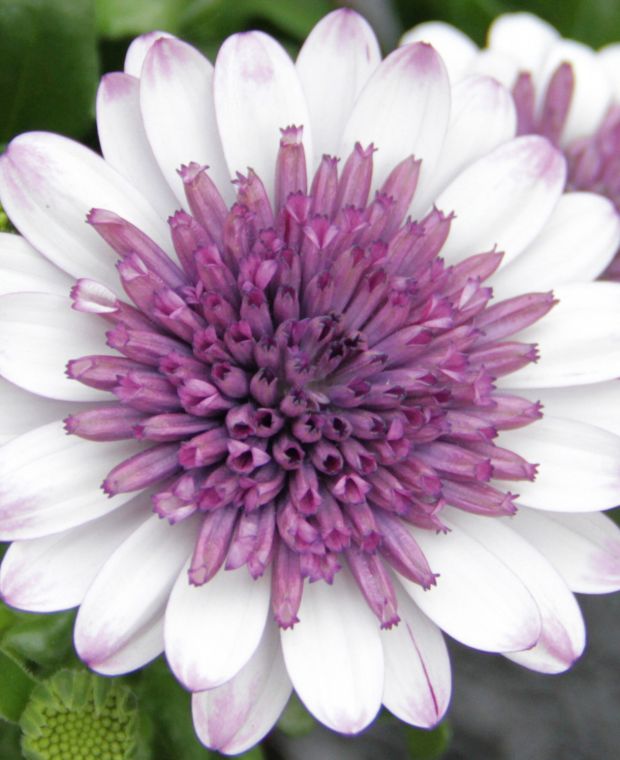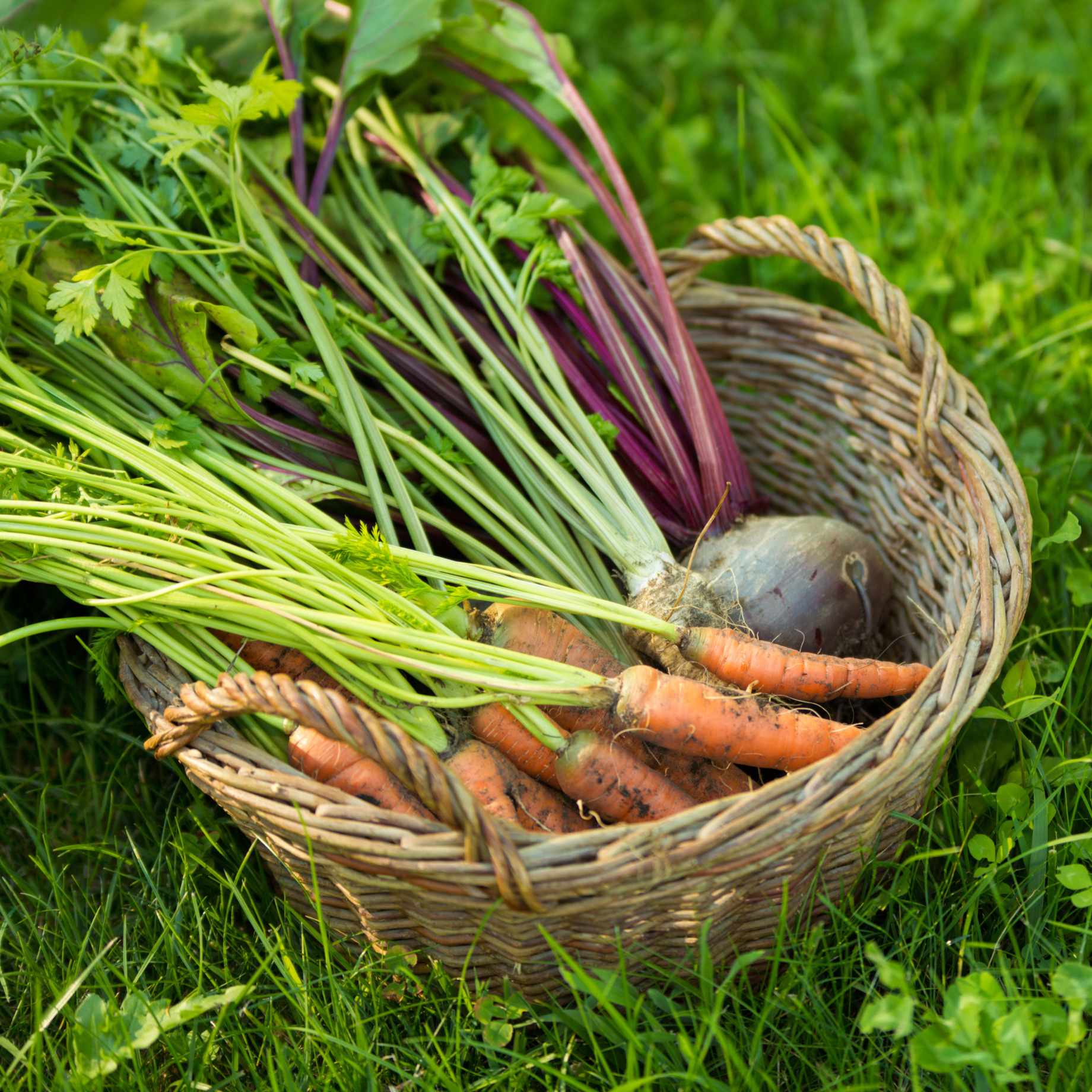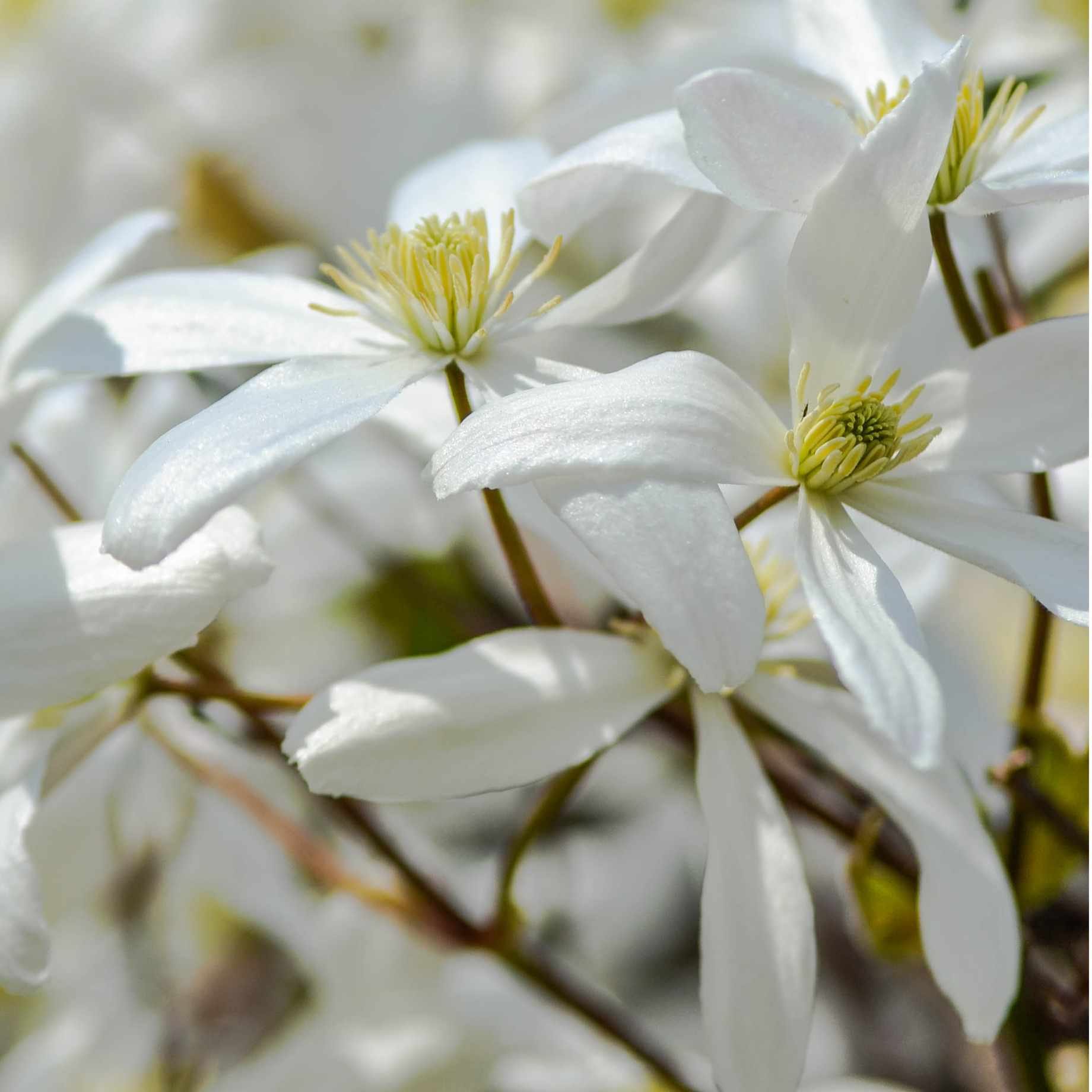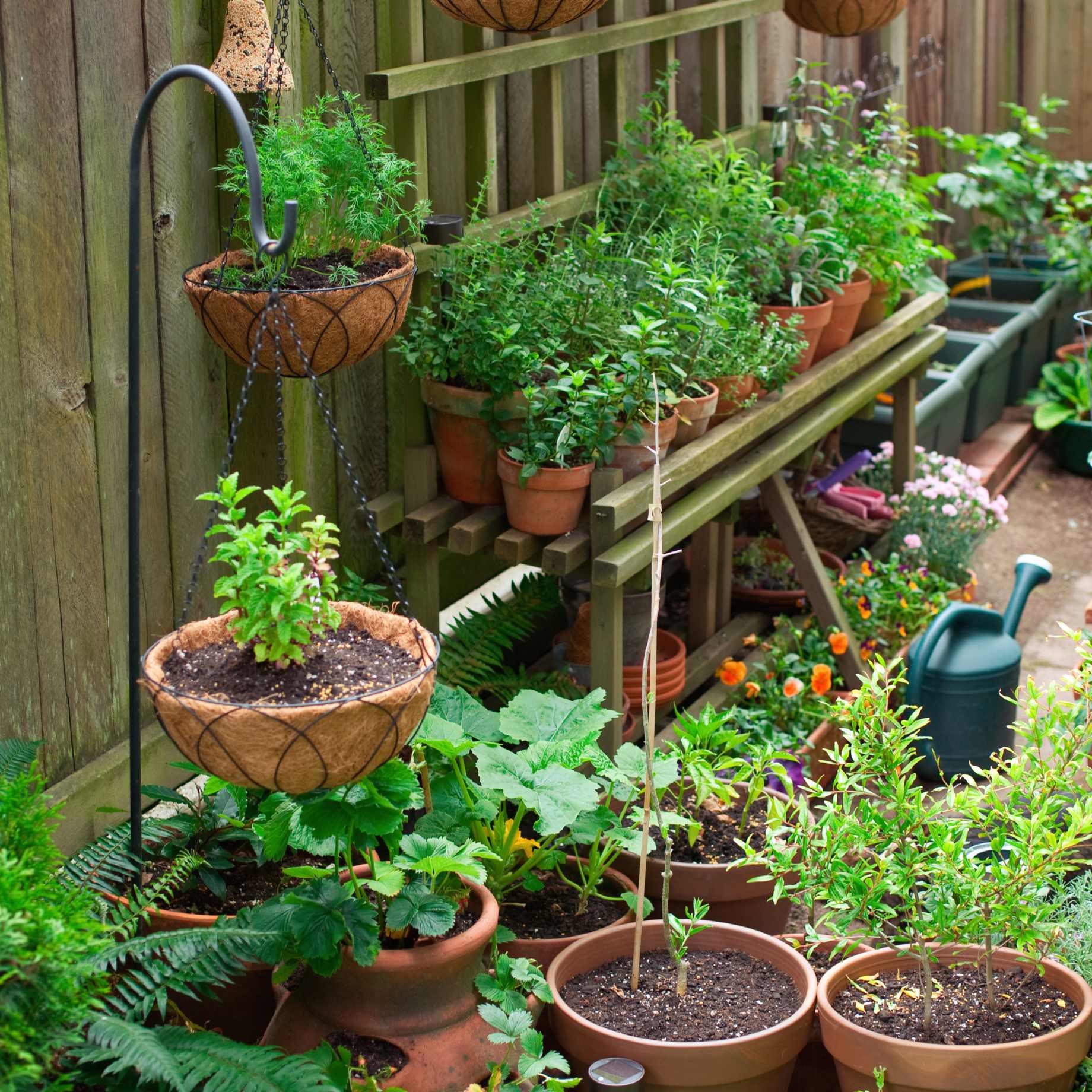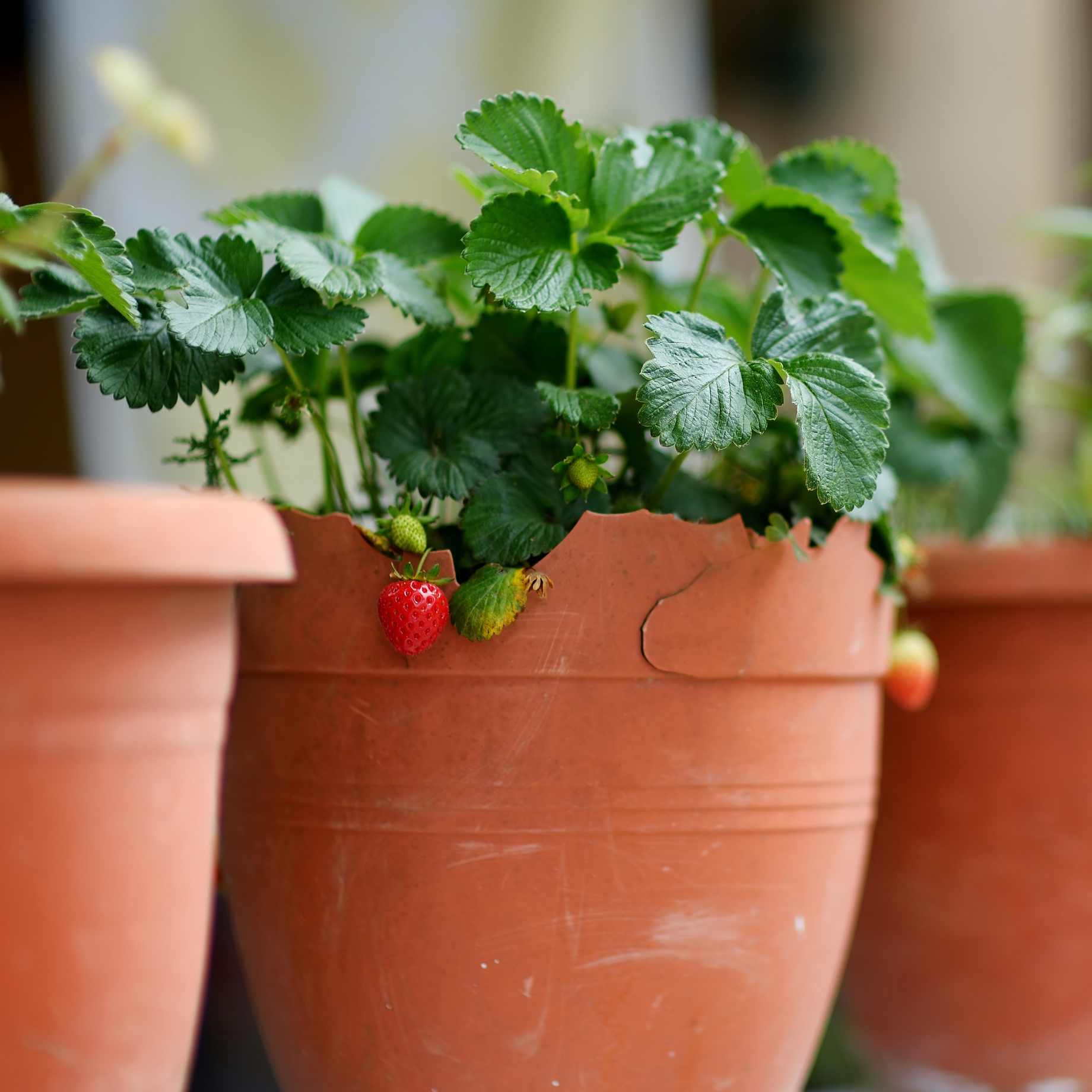Tell Me More…
Much admired for its multiple layers of petals which make blooms full and flouncy as well as beautifully marked.It is nearly impossible to wander past this African Daisy without stopping to stare. Truly striking double blooms are produced in abundance from May until the first frosts, so many in fact, the lush green foliage beneath becomes virtually invisible. A half-hardy (H3), reliable, and a vigorous grower Osteospermum ‘Erato Double Purple’ is becoming increasingly popular for baskets and containers where the bright, bold colour acts as a beacon for bees and butterflies. Osteospermum ‘Erato Double Purple’ gets its common name as it is native to Africa, it is also called the Cape Daisy for the same reason. Unsurprisingly these plants love a sunny spot so, for best results, plant in well drained, fertile soil of any kind except clay. Ensure it is situated in a sunny spot with a south or west facing aspect and it will grow to reach a height and spread of up to 30-40cm.
Flower and Foliage Months
Jan
Feb
Mar
Apr
May
Jun
Jul
Aug
Sep
Oct
Nov
Dec
Foliage Month
Flowering Month
Key Information
| Latin Name | Osteospermum ‘Erato Double Purple’ |
|---|---|
| Common Name | African Daisy, Cape Daisy |
| Hardiness | H3 (-1 to -5°C) |
| Colour | Purple |
| Type | Perennial |
| Format | Young Plants |
| Position | Full-Sun |
| Foliage | Semi-Evergreen |
| Height in Maturity (m) | 0.40 m |
| Spread in Maturity (m) | 0.40 |
| Soil Conditions | Chalk Loam Sand |
| Soil Acidity | Acid Alkaline Neutral |
| Aspect | South-facing, West-facing |
| Drought Tolerant | Yes |
| Good for pots | Yes |
| Good for hanging baskets | Yes |
| Good for Rockeries | Yes |
| Good for wildlife | Yes |
| Good for pollinators | Yes |
| Good for cutting | Yes |
| Good for groundcover | Yes |

